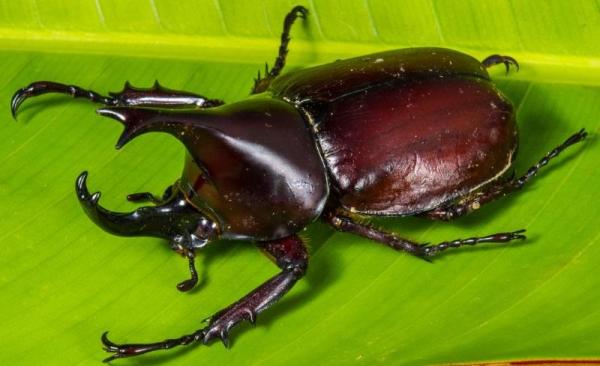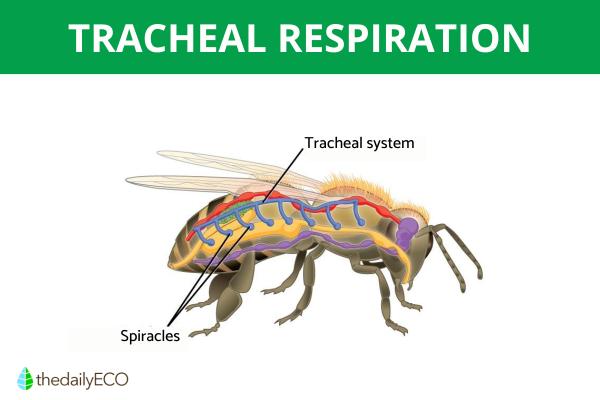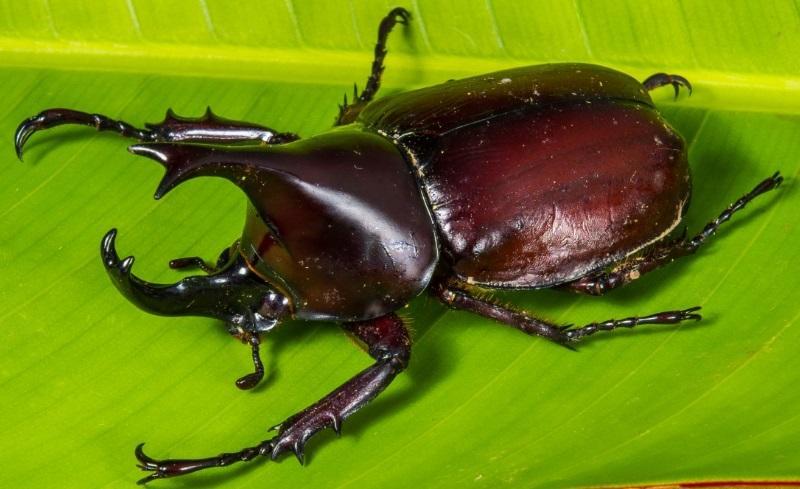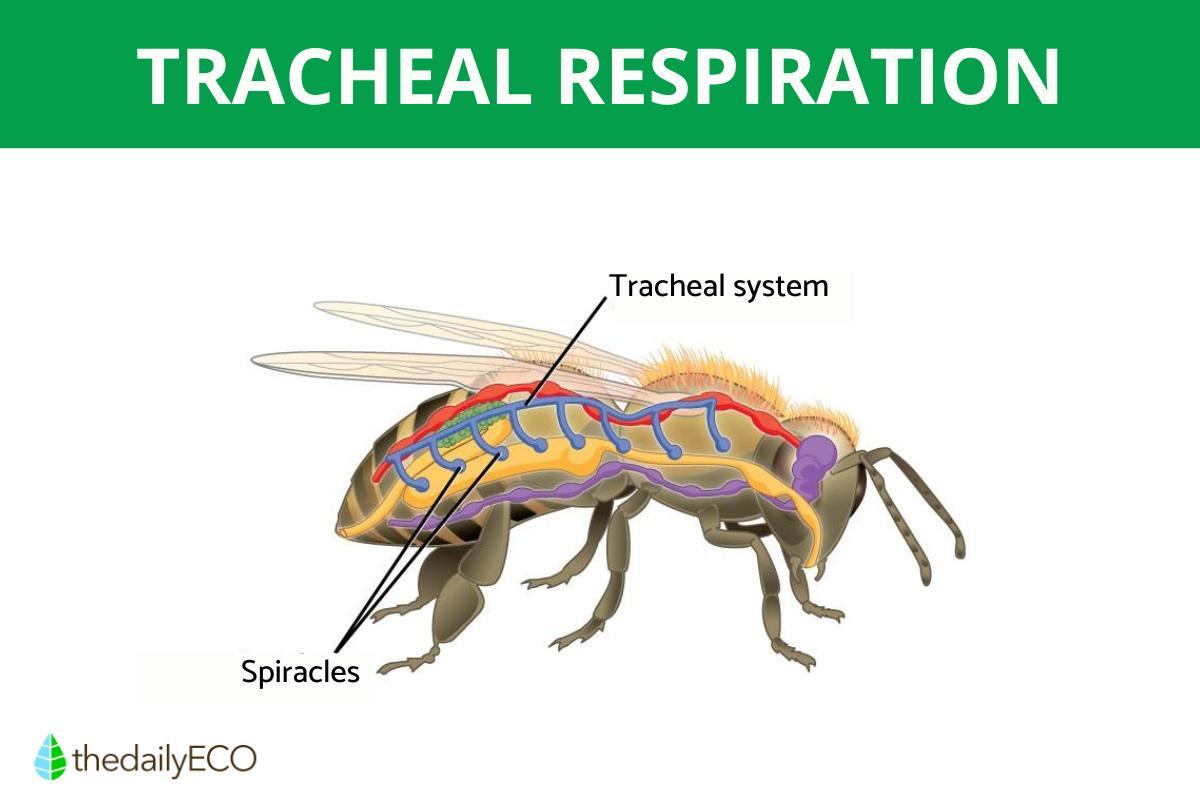How Do Insects Breathe? - Tracheal Respiration


The reason living things breathe is to get the oxygen they need and get rid of carbon dioxide waste. Plants and animals breathe in different ways. Firstly, plants mainly breathe in CO2, while animals use the gas that plants exhale, oxygen. Animals also have different forms of respiration, and although lung respiration is the best known, mainly because it is practiced by humans, it is not the only one. Most small animals, such as insects, spiders, and worms, breathe through their trachea because they lack lungs.
The following thedailyECO article explains what tracheal respiration is, its main features, and what species perform this type of breathing.
What is tracheal respiration?
Tracheal respiration is characterized by the absence of large organs, such as lung, to carry out respiration. Instead, animals with tracheal respiration are characterized by having various openings in their bodies. These openings are directly connected to a tube called the trachea. This branches into smaller tubes called tracheoli, which eventually distribute air to the cells of the animal's body.
Thus, the tracheal respiratory system is characterized by the fact that it extends over the entire body, allowing air to circulate through the tracheae directly from the external environment into the animal's body. As an example, think of the tracheal respiratory system as a sponge. The sponge has small holes through which water can enter to moisten it. Similarly, the tracheal openings allow air into the internal tracheal system, which supplies oxygen to the animal's tissues. Finally, carbon dioxide, a waste product of metabolism, leaves the body through the spiracles.
Although this respiratory system is not as well known as pulmonary respiration, millions of species around the world breathe through the tracheae. Most notably insects, millipedes, and arachnids. We will discuss these animals in more detail in the next section.

What animals use tracheal respiration?
As we mentioned earlier, there are many species that use tracheal respiration for breathing, especially small animals such as insects. Some examples of names of animals with tracheal breathing are the following:
- Insects: are a group of animals characterized by a chitinous exoskeleton, a three-part body (head, thorax, and abdomen), three pairs of jointed legs, compound eyes, and a pair of antennae. In addition, most insects have wings. They are among the most widespread animals of all and are found in aquatic ecosystems such as rivers or lagoons as well as on land, except for the Antarctic continent. Some of the most common examples of these animals with tracheal respiration are ants, wasps, bees, or beetles.
- Myriapods: are a group of arthropods that includes millipedes, centipedes, pauropods, and symphylans. They are characterized by having many legs, although the number varies greatly from species to species. Some species have less than a dozen legs, while others have many hundreds of legs. In addition to having many pairs of legs, they are known for having only two body parts (head and trunk), simple eyes, and a respiratory exchange via a tracheal system. Some of the best known examples are centipedes.
- Arachnids: The class Arachnida includes a diverse group of arthropods. Scientists describe more than 100,000 species of arachnids. The body of arachnids is usually divided into two distinct parts, the cephalothorax (anterior part) and the abdomen (posterior part). Unlike insects, arachnids do not have wings or antennae. Although we tend to think of arachnids as closely related to insects, their closest relatives are actually horseshoe crabs and spider crabs. The most common examples include spiders, scorpions, mites, and ticks.
- Onychophorans: Onychophores, commonly known as velvet worms, are invertebrates that are worm-like and have a soft body structure. They feed on other invertebrates, which they capture by expelling a sticky mucus. They are characterized by a continuous straight intestine with an anus, an open circulatory system with a heart, and a simple respiratory system in the form of tracheae and spiracles. Like myriapods, they are also known for their many pairs of legs, ranging from 14 to 43. Currently, there are about 180 known species, but it is believed that there are many more. Two major families are distinguished, the Peripatidae and the Peripatopsidae.

Why do only these animals use tracheal respiration?
As we have seen, tracheal respiration is characterized by the fact that it is used mainly by small animals. Lacking organs such as lungs to take in large amounts of air from the environment, these animals rely on simple gas exchange to get oxygen into their bodies and expel carbon dioxide. They are only able to do this because their bodies are small.
In tracheal respiration, oxygen is absorbed much more slowly than in pulmonary respiration. In addition, oxygen cannot be transported over longer distances. Therefore, larger animals cannot use the tracheal respiratory system. Larger animals need a central site for oxygen uptake (the lungs) and a transport mechanism (the heart and blood) to distribute oxygen quickly enough to all cells in the body.
If you want to read similar articles to How Do Insects Breathe? - Tracheal Respiration, we recommend you visit our Facts about animals category.







